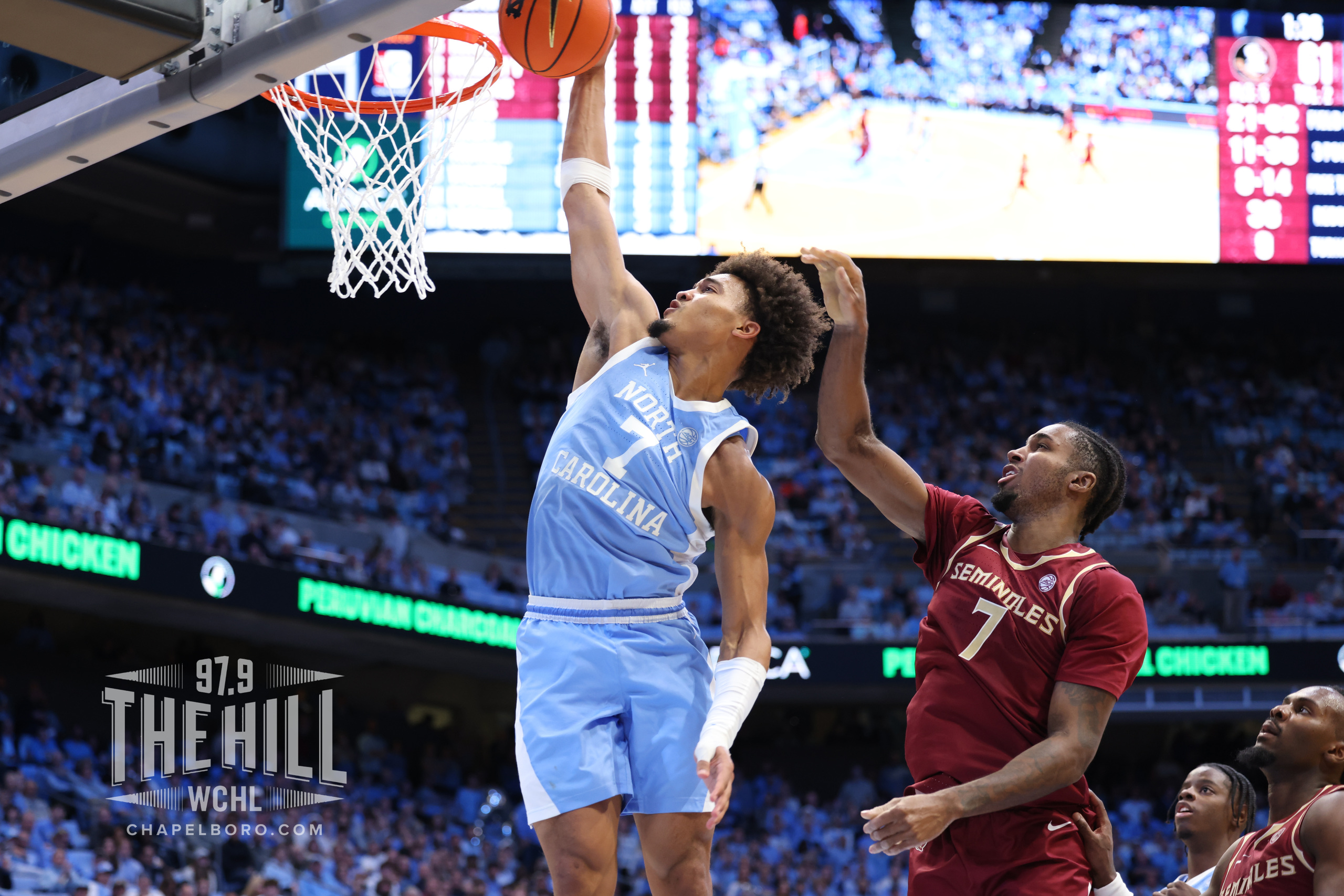Kevin Guskiewicz, dean of the UNC College of Arts and Sciences, has studied traumatic brain injury in former-athletes for nearly two decades, after founding the Center for the Study of Retired Athletes in 2001.
Now, the center’s research into CTE, or Chronic Traumatic Encephalopathy, will take a huge step forward as a result of a new study announced last week funded by a grant from the NFL.
In partnership with the Harvard Medical School, Boston Children’s Hospital, and the Medical College of Wisconsin, UNC will help manage a project tracking 2,500 former-NFL players. They will look for signs of CTE, which is characterized by the build-up of proteins in the brain, and has shown to be connected to repeated blows to the head and concussions. Those exhibiting symptoms of that brain injury will undergo closer exams and research evaluations. In several years, those athletes will have the option to join a novel clinical program to treat CTE being developed at Boston Children’s Hospital.
This study is particularly game-changing, because it looks at the largest group of former-NFL athletes so far, then compares data collected over the nearly 20 years. Perhaps most crucially, the study looks in CTE in live patients. To date, Guskiewicz said, CTE has only been identified in deceased athletes, during autopsy.
UNC will host the athletes participating in the study from the East Coast, while the Medical College of Wisconsin provides a convenient location for NFL players based in the Midwest. Guskiewicz said many of the participating players are eager to participate in this study and help address the issues surrounding CTE.
“There’s been this stigma attached to many of these former-athletes who’ve played lengthy careers. The stigma suggesting that they are ‘damaged goods,’” he said. “Many of them want to be out their contributing to society and holding a job for many years after their playing years have finished.”
In recent years, there have been a few policy and equipment changes in the NFL, many at the urging of Guskiewicz, to tackle concerns over repetitive concussive injuries in athletes.
“I think the game has to change, but we have to study it to make sure that the changes — the rule changes, policy changes, equipment changes — that are being put into place make sense,” he said. “That they are, in fact, effective in improving safety in sport.”
Back in 2011, Guskiewicz and The Center for the Study of Retired Athletes helped pass a rule change surrounding kick-off procedure, leading to a 50 percent decrease during those plays.
Photo via Donn Young, UNC College of Arts & Sciences
Related Stories
‹
![]()
UNC AD: Fedora Understands Connection Between Football and CTELarry understands the connection between football and CTE,” UNC athletics director Bubba Cunningham said Thursday at the UNC Board of Trustees meeting. Those comments came after head football coach Larry Fedora made some controversial statements at ACC Media Day in Charlotte where the coach said that football was “under attack” and that it has […]
![]()
UNC’s Fedora Causes Stir with CTE Comment at ACC Media DaysNorth Carolina coach Larry Fedora said Wednesday he doesn’t believe it’s been proven that football causes the degenerative brain disease CTE and offered a passionate defense of a sport he believes is “under attack.” Fedora, during interviews at Atlantic Coast Conference preseason media days, described the sport as an integral part of American culture and […]
![]()
Report: Former UNC Lineman Ryan Hoffman Had CTEA former UNC football player, who died while riding his bicycle into oncoming traffic late last year, had CTE. Ryan Hoffman was thrust into the national spotlight after being profiled by the New York Times last year, while the former offensive lineman was battling homelessness and drug abuse in Florida. The Times reported on Tuesday […]

UNC Locker Room Reactions: Florida StateUNC beat Florida State 79-66 in the ACC opener at the Smith Center Tuesday night. Check out what the Tar Heels had to say about the win: Kyan Evans On playing with fellow guard Derek Dixon: Derek’s a really good guard. He was making a lot of plays out there, he had it going a little […]

UNC Men's Basketball Overcomes Poor Shooting, Dispatches Florida State in ACC OpenerDespite UNC missing 11 of its first 12 shots, the Tar Heels still found enough offense to beat Florida State 79-66 Tuesday night at the Smith Center in the team’s ACC opener. HEELS WIN.#CarolinaFamily | @WellsFargo pic.twitter.com/fLZIP2MHqD — Carolina Basketball (@UNC_Basketball) December 31, 2025 Caleb Wilson recorded his 10th double-double of the season with 22 […]

Chansky's Notebook: Here We Go!The ACC fun begins tonight and is set up just right for UNC, with a home date against Florida State tipping off at 7 p.m.

UNC Men's Basketball vs. Florida State (2025): How to Watch, Cord-Cutting Options and Tip-Off TimeUNC will return from the holiday break Tuesday when it hosts Florida State at the Smith Center. It’s the first ACC game of the season for the Tar Heels. If you aren’t attending the game in person, here’s how you can follow along at home: Broadcast Schedule Those hoping to listen on the radio can […]

UNC Women's Basketball Uses Huge Runs to Crush Boston CollegeUNC used runs of 18-0 and 26-0 to soar past Boston College 90-39 Monday night in its return from the holiday break. The win is Carolina’s first in ACC play this season. 𝗦𝗢𝗔𝗥𝗘𝗗 to an ACC Road Win!@WellsFargo x #GoHeels pic.twitter.com/TMRkCfdpx7 — Carolina Women's Basketball (@uncwbb) December 30, 2025 The 18-0 run came after the […]

As ACC Play Begins, Where Does UNC Men's Basketball Stand?UNC will open conference play Tuesday night when it hosts Florida State at the Smith Center. The Tar Heels are currently 12-1 and ranked No. 12 in the most recent AP Poll. As it stands, Carolina is far from the NCAA Tournament bubble, where the team resided for much of last season. Here’s a quick […]

Top Stories of 2025: UNC Men's Basketball Gets a FaceliftTo reflect on the year, Chapelboro.com is re-publishing some of the top stories that impacted and defined our community’s experience in 2025. These stories and topics affected Chapel Hill, Carrboro and the rest of our region. The 2024-25 season was not what UNC would call “up to its standard.” The Tar Heels struggled for much […]
›









